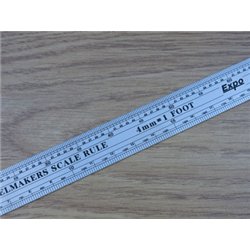This very much depends on the project you are working on. For painting the base coat I would say no it is not...
No products
Product successfully added to your shopping cart
There are 0 items in your cart. There is 1 item in your cart.
Search Tips
Christmas and New Year
We are dispatching orders every weekday apart from Christmas Day, Boxing Day and New Year's Day.
If you order is time critical, select next day delivery at checkout.
The shop in Sandown is closed from 25th December, reopening on 30th December.
What are the common railway scales?
There are three common model railway scales, these being N Gauge, OO Gauge and G scale; although there are several other scales the smallest being Z Gauge with a gauge width of 6.5mm and a scale of 1/220.
N Gauge is the smallest most common with a gauge width of 9mm the scale is 1/148 in the UK (1/160 in the rest of the world). This is an ideal size if you have limited space available for a layout.
OO gauge is the most common in the UK and the scale of Hornby sets. This is the scale everybody thinks of when you say model railway. With a gauge width of 16.5mm and a scale of 4mm to 1ft, that is 1/76th. You can have a layout on an 8ft by 4ft base board or fill your loft with a massive layout.
G Scale is the big one that you have running around the garden in the summer.The scale is not clearly defined and can vary from 1/19 to 1/29 depending on the manufacturer, however the track gauge is always 45mm.
Click here to receive the tips weekly in your mailbox. You can unsubscribe at any time.










